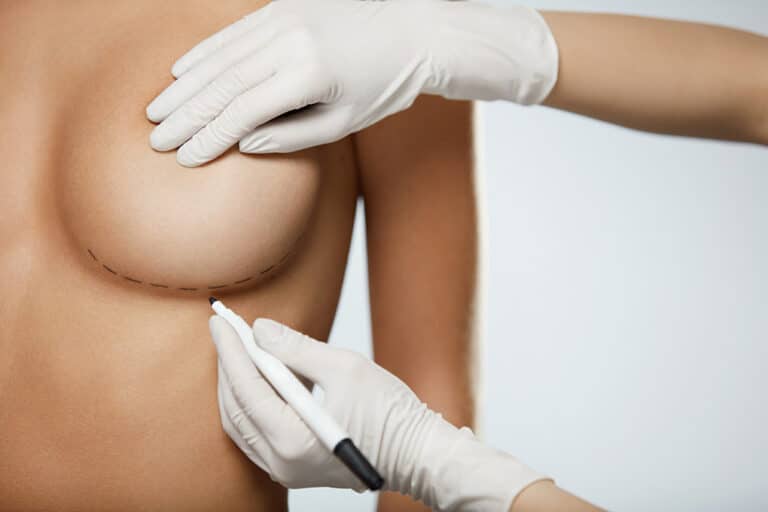Gynecomastia Surgery: What Men Need to Know Before Going Under the Knife
Gynecomastia is a medical condition that affects many men and boys, leading to the enlargement of breast tissue. This condition can be caused by hormonal imbalances, certain medications, or other underlying health conditions. While gynecomastia can be embarrassing and uncomfortable for those affected, there are several treatment options available. Surgery is the most common form of treatment for gynecomastia, but there are also non-surgical methods available. Recovery after surgery is an important part of the treatment process and should be discussed with your doctor before proceeding with any type of treatment. In this article, we will discuss what gynecomastia is, potential causes, diagnosis and treatment options, as well as recovery following surgery.
What is Gynecomastia?
Gynecomastia is a medical condition in which the breast tissue of a male becomes enlarged. It can be caused by hormonal imbalances, certain medications, or other underlying health conditions. The condition is often associated with embarrassment and psychological distress, so it is important to understand what causes it and how it can be treated.
Definition of Gynecomastia
Gynecomastia is defined as abnormal enlargement of the male breast tissue due to an imbalance of hormones or other factors. It typically affects both breasts equally but may appear asymmetrical in some cases. The degree of enlargement can vary from mild to severe, depending on the cause and severity of the condition. In general, gynecomastia results in a firm, rubbery mass that is located directly beneath the nipple area. It may also be accompanied by tenderness or soreness in the affected area.
Causes of Gynecomastia
The most common cause of gynecomastia is an imbalance between the hormones testosterone and estrogen. This can occur naturally during puberty when testosterone levels are still developing, as well as during older age when testosterone production decreases. Other causes include the use of certain medications such as steroids or drugs used for cancer treatment, liver disease, malnutrition, kidney failure, and certain types of tumors.
Diagnosis of Gynecomastia
Gynecomastia is usually diagnosed through physical examination and medical history review. Your doctor will assess your symptoms and examine your breasts for any signs of swelling or tenderness. In some cases, additional tests such as blood tests or mammograms may be ordered to rule out other potential causes for the condition.
Gynecomastia is an abnormal enlargement of male breast tissue caused by hormonal imbalances or other factors, and is typically diagnosed through physical examination.Gynecomastia can be caused by natural hormone fluctuations during puberty or older age, certain medications, liver disease, malnutrition, kidney failure, and tumors.
Treatment Options for Gynecomastia
The treatment options for gynecomastia depend on the severity of the condition. Surgery is usually recommended as the best option, but there are non-surgical treatments available as well.
Surgery for Gynecomastia
Surgery is the most common and effective treatment for gynecomastia. The type of surgery used will depend on the patient’s age, the severity of their condition, and any underlying medical conditions they may have. In some cases, a combination of liposuction and excision may be necessary to achieve optimal results. During surgery, excess fat and glandular tissue are removed from around the chest area. The surgeon may also use liposuction to remove excess fat from other areas of the body if necessary. Surgery can be done under local or general anesthesia depending on the patient’s preference and tolerance.
Non-Surgical Treatment for Gynecomastia
For mild cases of gynecomastia, non-surgical treatments may be an option. These include medications such as tamoxifen or raloxifene, which block estrogen receptors in breast tissue and help reduce swelling and tenderness in the chest area. Other medications such as danazol or clomiphene can also be used to reduce breast size by blocking testosterone production in men. Non-surgical treatments are not always effective and do not provide permanent results so they should only be used in mild cases of gynecomastia.
In addition to medications, lifestyle changes can also help reduce symptoms of gynecomastia such as avoiding certain drugs (e.g., anabolic steroids) and maintaining a healthy diet with regular exercise. Some men find that these lifestyle modifications help reduce their gynecomastia symptoms without needing further medical intervention.
No matter which treatment option is chosen, it is important to discuss all options with a doctor before making any decisions about how to treat gynecomastia. A doctor can help determine which option is best suited for each individual case based on factors such as age, health history, and severity of the condition.
|
Treatment Option
|
Description
|
|
Surgery
|
Excess fat and glandular tissue removed from chest area, may use liposuction for other areas of body.
|
|
Non-Surgical
|
Medications (e.g., tamoxifen or raloxifene) to block estrogen receptors, danazol or clomiphene to block testosterone production, lifestyle changes (e.g., diet and exercise).
|
Recovery After Surgery
The recovery period following gynecomastia surgery depends on the type of procedure performed. Generally, patients can expect to be back to their normal activities within a week or two after surgery. However, it is important to note that the healing process may take several weeks or months for complete recovery.
Liposuction Recovery
If liposuction is used to remove excess fat and tissue, the recovery time is usually shorter than if the patient has undergone traditional breast reduction surgery. Patients are typically able to return to their regular activities within a few days after liposuction, although strenuous activity should be avoided for at least a week. Swelling and bruising may persist for several weeks, but these side effects will gradually improve over time.
Post-Operative Care and Management
Patients should follow their surgeon’s post-operative instructions carefully in order to ensure proper healing and prevent infection or other complications. These instructions may include avoiding strenuous activity, wearing a compression garment for several weeks after surgery, and taking medications as prescribed by the doctor. It is also important to keep follow-up appointments with the surgeon in order to monitor progress and address any potential issues that may arise during the recovery process.
Overall, most patients are able to resume their normal daily activities within one or two weeks after gynecomastia surgery. Although there may be some discomfort during the initial stages of recovery, this should gradually improve as healing progresses. By following their doctor’s post-operative instructions closely and attending all scheduled follow-up appointments, patients can help ensure a smooth and successful recovery from gynecomastia surgery.
Recovery time after gynecomastia surgery depends on the type of procedure performed, and post-operative care is important for a successful recovery.
Conclusion
Gynecomastia is a condition that affects many men and can be embarrassing and uncomfortable. Fortunately, there are both surgical and non-surgical treatment options available to help reduce the appearance of enlarged male breasts. Surgery is often the most effective solution for severe cases of gynecomastia, while non-surgical treatments may be best for mild cases. Recovery from surgery typically takes several weeks, during which time patients should follow their doctor’s instructions carefully to ensure a successful outcome. With proper care and management, men with gynecomastia can enjoy improved self-confidence and restored body image.





